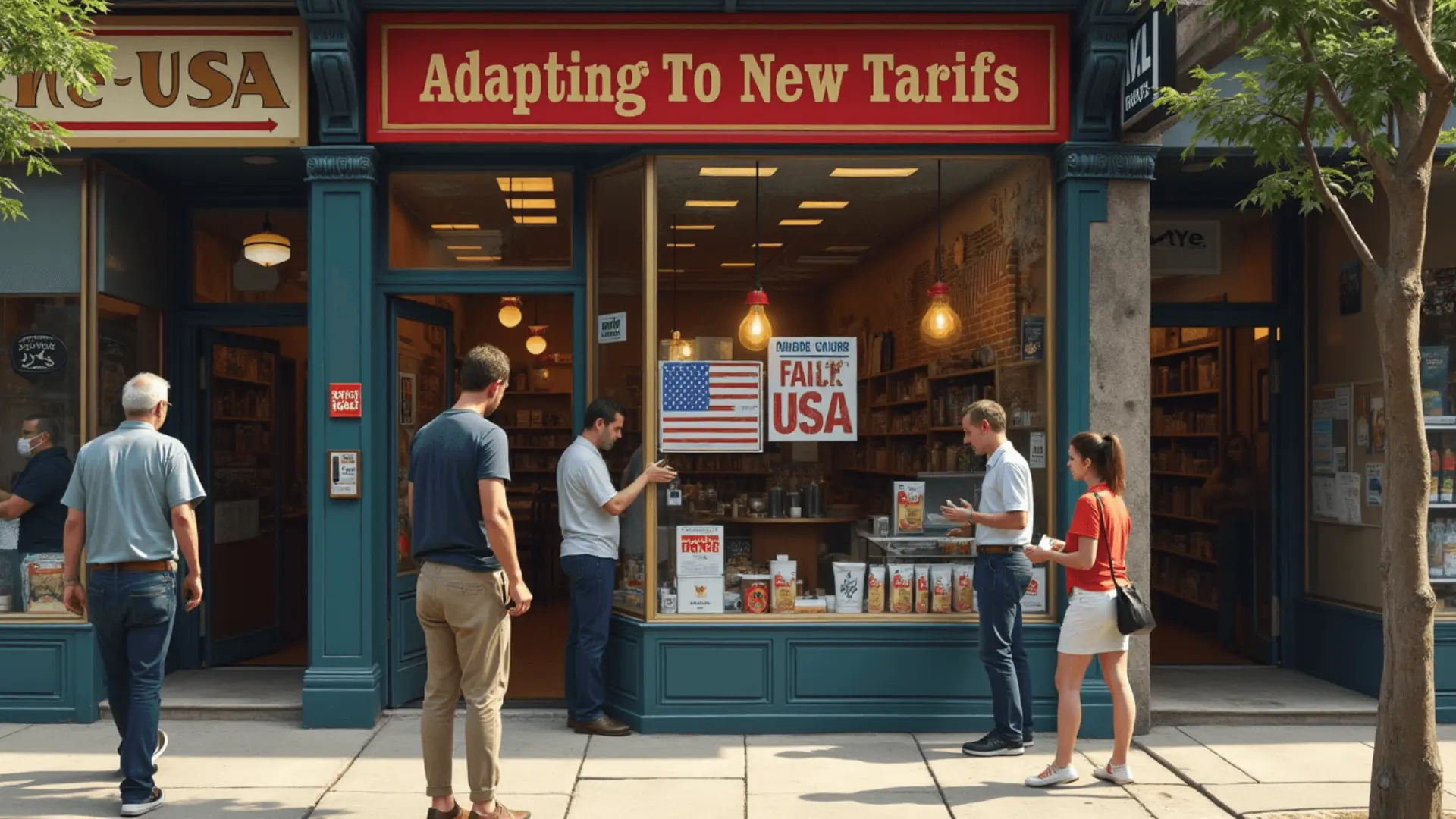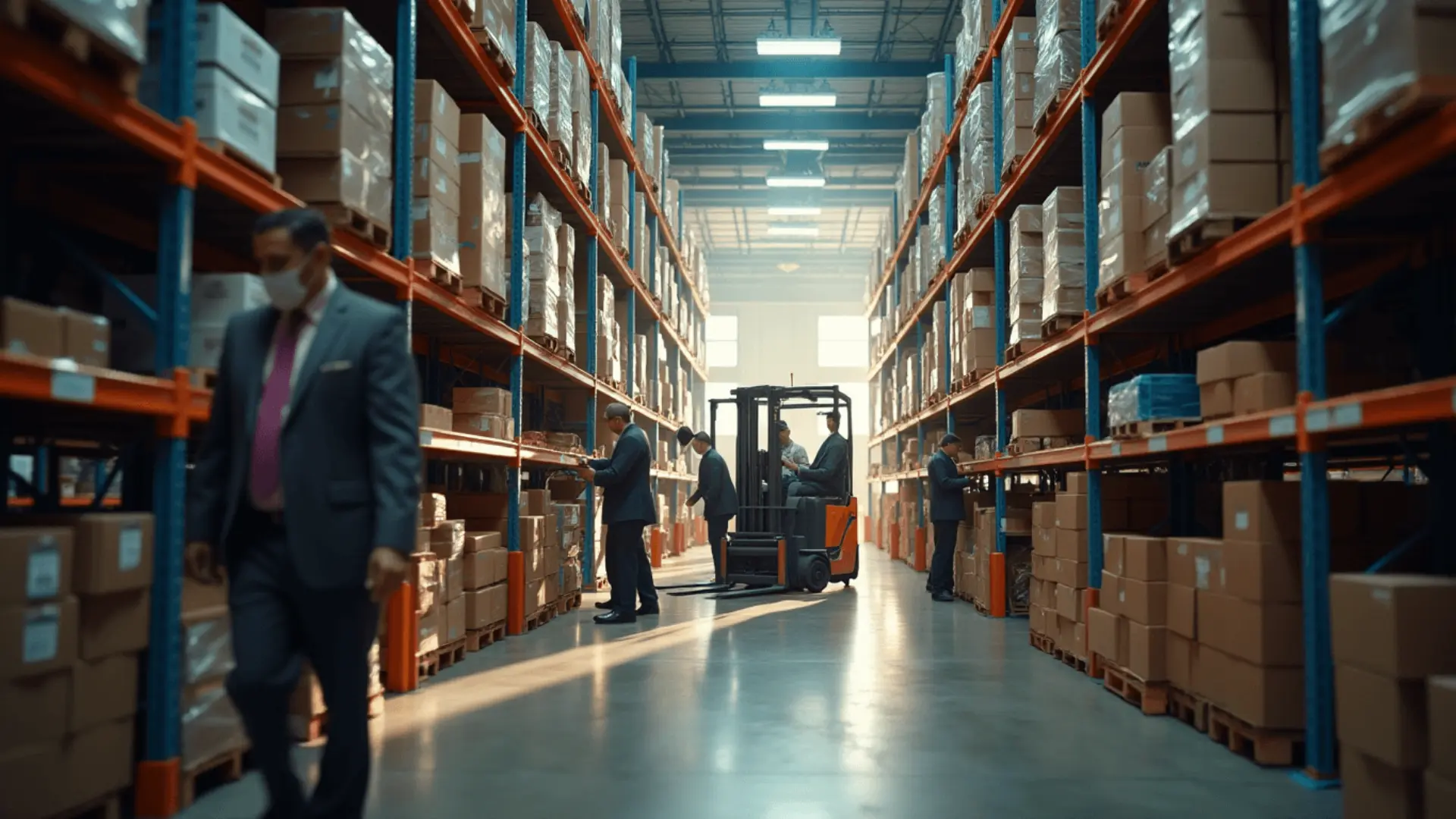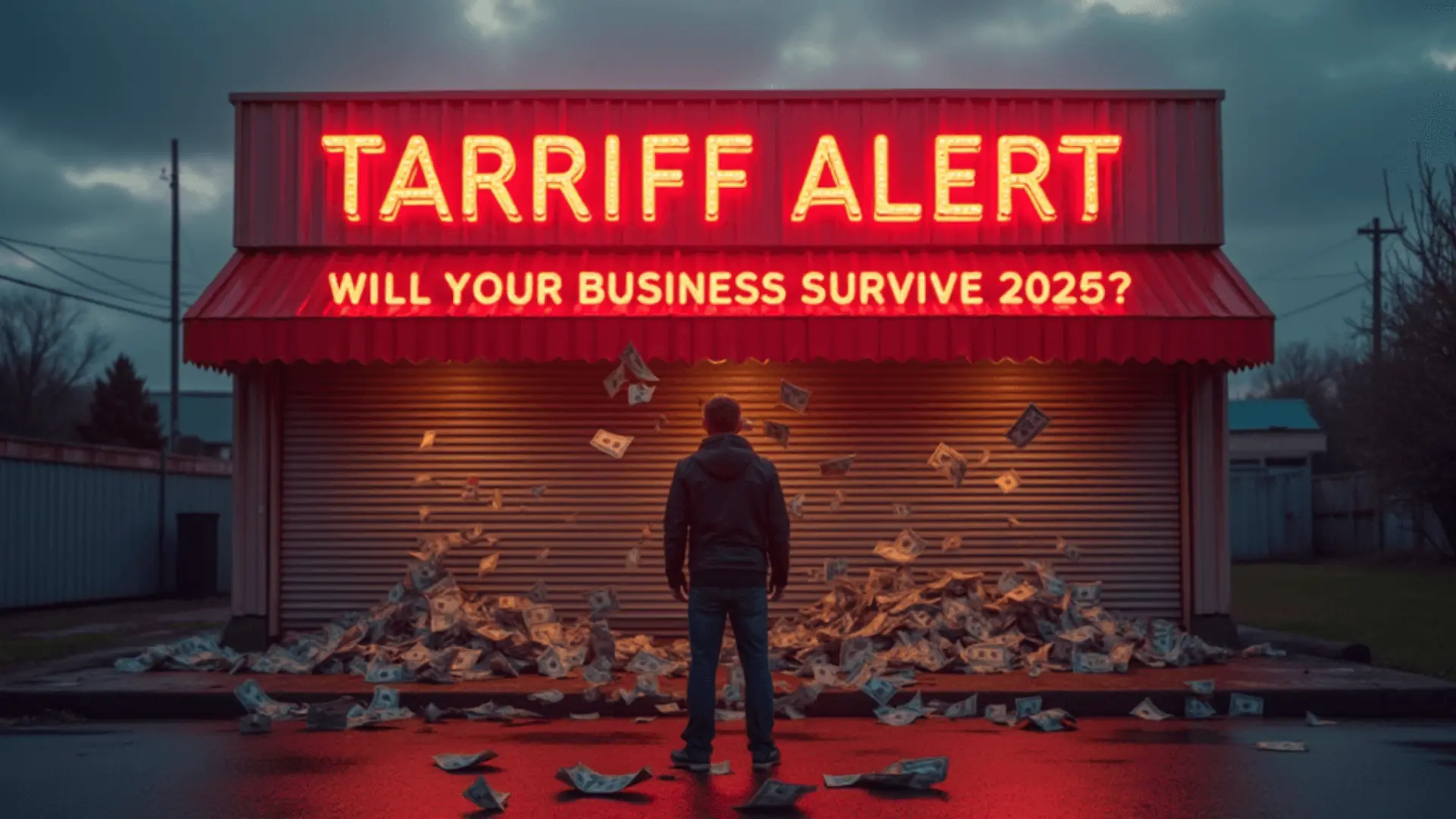Trump 2025 Tariffs Unveiled: 7 Ways They Will Transform Your Business
Introduction
Trump 2025 tariffs are set to fundamentally reshape the American small business landscape starting next month. As we approach April 2025, entrepreneurs across the nation are preparing for one of the most significant trade policy shifts in recent years. The newly implemented tariff structure will touch virtually every sector of the economy, from manufacturing and retail to technology and agriculture. For small business owners who make up the backbone of America’s economy, understanding these changes isn’t just beneficial—it’s essential for survival in an increasingly competitive marketplace in small business 2025. This comprehensive guide provides the critical information you need to navigate the coming changes and position your business for success in this new economic environment
[Explore our 2025 Business Trends Guide].
Table of Contents
Trump 2025 Tariffs: The New Economic Landscape
Recent economic analysis suggests that the incoming tariffs could impact nearly 65% of all imported goods entering the United States, representing a dramatic expansion from previous trade policies. The American small business sector, which accounts for 44% of U.S. economic activity, stands at the crossroads of these changes. Looking back at previous tariff implementations—like the 2018 steel tariffs that spiked costs for auto parts—we’ve seen both challenges and opportunities emerge for small businesses across the country
[Learn more from a top USA business magazine].
The 2025 tariff structure builds upon those policies but introduces key expansions, targeting technology products (like semiconductors), automobiles (especially EVs), and consumer goods from specific trade partners like China and Germany. Industry experts note that unlike earlier tariffs, these include sophisticated targeting mechanisms to protect strategic American industries while pressuring trading partners toward balanced relationships—a game-changer for tariff adaptation in small business 2025. The approach covers finished goods, components, and raw materials critical to supply chains.

“Curious how this hits your sector? Keep reading!”
How Trump 2025 Tariffs Impact Different Small Business Sectors
The Trump 2025 tariffs will create ripple effects across virtually every segment of the small business economy. Here’s how different sectors can expect to be affected:
- Manufacturing: Small American manufacturers may benefit from reduced foreign competition, but those relying on imported components (e.g., steel bolts) will face higher input costs. Manufacturers using steel and aluminum will see raw material costs rise 15-20% on average.
- Retail and E-commerce: Retailers selling imported consumer goods—like budget smartphones or winter jackets—will face tough choices between absorbing costs or passing them to consumers, with price hikes of 10-25%.
- Technology Services: Software and IT firms may see higher hardware costs but could gain from demand for efficiency tools as businesses adapt to Trump 2025 tariffs [Internal Link: Discover Tech Solutions for Small Businesses].
- Food and Beverage: Restaurants and specialty retailers relying on imported French wines or Italian cheeses will face tariffs up to 35%, pushing menu price adjustments.
- Construction and Home Services: Building material costs—like imported copper pipes—will spike, slowing small renovation firms.
- Healthcare and Medical Services: Small practices will see higher costs for imported MRI parts, impacting upgrades.
- Agriculture: Small farms face mixed outcomes—e.g., soybean growers may lose export markets due to retaliation, while local wheat farmers gain.
- Transportation and Logistics: Firms will see demand for domestic trucking rise but face higher costs for imported truck parts.
- Professional Services: Accounting and consulting firms will boom as businesses seek tariff adaptation advice.
- Green Energy: Solar firms face 25-40% higher costs for imported panels, challenging growth despite incentives.
The Trump 2025 tariffs create a complex environment where strategic positioning is key for small business 2025. Domestic supply chains may win, while import-heavy firms need rapid tariff adaptation
[Explore insights from a leading USA trade policy site].
“Want to beat the tariff game? Check the next steps!”

Navigating Trump 2025 Tariffs: Strategic Adaptation Steps
Small business owners can take concrete steps to protect their operations from the negative impacts of Trump 2025 tariffs while capitalizing on new opportunities in small business 2025. Follow this strategic adaptation plan:
- Conduct a Supply Chain Audit: List products like imported fabrics or electronics, noting tariff exposure and domestic alternatives.
- Explore Domestic Suppliers: Research U.S. manufacturers—e.g., a Texas steel mill vs. a German one—factoring in tariffs and shipping.
- Investigate Alternative International Sources: Shift to countries like Vietnam with free trade agreements to dodge tariffs.
- Restructure Pricing Strategies: Recalculate break-even points—e.g., absorb 5% cost hikes but pass on 10% to retain loyalty.
- Apply for Exclusions: Prepare docs showing no U.S. alternative exists for critical items like rare medical sensors.
- Leverage Technology for Efficiency: Use automation tools (e.g., robotic inventory systems) to cut costs [Internal Link: Check our Automation Tools Guide].
- Explore Product Redesign: Swap tariffed aluminum parts for U.S.-made plastic without losing quality.
- Join Industry Associations: Stay updated via groups like the National Small Business Association.
- Secure Working Capital: Tap SBA loans to cushion cash flow during tariff adaptation.
Avoid mistakes like overstocking without analysis or ignoring customer communication about price shifts.

“Real success stories ahead—don’t miss out!”
Trump 2025 Tariffs in Action: Real Business Scenarios
The impact of Trump 2025 tariffs shines through these small business responses:
Midwest Manufacturing Solutions – Toledo, Ohio
This 37-employee metal fabrication firm, specializing in custom auto parts, feared 30% higher costs for German steel alloys. Owner Maria Sanchez switched to a Pennsylvania supplier for steel sheets and invested $175,000 in laser cutters. After three months, costs rose only 8%, lead times dropped by two weeks, and they snagged new auto shop clients.
Key Takeaway: Domestic sourcing plus efficiency beats tariff woes.
Coastal Kitchenware – Charleston, South Carolina
This retailer, selling imported bamboo cutting boards, faced cost hikes from China and Europe. Owner James Wilson launched an “American-made” oak board line (35% of stock), redesigned packaging to scream “premium imports,” and added a Mexico-made private label. Profit held despite 15% cost increases.
Key Takeaway: Diversification turns challenges into brand wins.
TechStart Solutions – Denver, Colorado
This IT firm, serving local retailers, launched a “Tariff-Proof IT” package, moving clients to cloud systems over imported servers. Founder Sarah Johnson saw a 28% contract boost as clients offset tariff costs with tech.
Key Takeaway: Service firms can thrive by solving tariff pain
[Learn more in our Tech Solutions for Small Businesses].

Long-Term Impact of Trump 2025 Tariffs on Small Business Growth
The Trump 2025 tariffs will reshape small business 2025 over time:
Short-Term Effects (First 12 Months)
Expect cost pressures and supply disruptions—e.g., a 15-20% profit dip for firms under $5M revenue without tariff adaptation.
Medium-Term Impacts (1-3 Years)
Reshoring rises, with 40% of surviving small businesses gaining market share via new supply chains and innovations.
Long-Term Transformation (3+ Years)
Regional manufacturing clusters grow, automation spikes, and consumers favor domestic goods—resilient firms win big.
The value? Trump 2025 tariffs push businesses to build sustainable models less exposed to global shocks
[See a USA economic analysis site for more insights].

“FAQs up next—get your answers!”
FAQs About Trump 2025 Tariffs for Small Business Owners
Are all imported products subject to the Trump 2025 tariffs? No, tariffs hit selectively—e.g., 25-40% on Chinese tech, 15-30% on European luxury goods. Check Commerce’s database.
Can my business qualify for tariff exemptions? Yes, if no U.S. alternative exists or jobs are at risk—applications take 60-90 days.
How will the Trump 2025 tariffs affect my existing contracts? No auto-protection—add “tariff adjustment clauses” to new deals fast.
Will consumer spending decrease because of price increases? Yes, 3-5% drop first six months, but it stabilizes in 12-18 months.
How are my competitors likely to respond to these tariffs? Big firms may absorb costs; small ones pass them on—smart ones mix strategies.
[YOUTUBE VIDEO PLACEMENT]
The Future Landscape Under Trump 2025 Tariffs
Beyond Trump 2025 tariffs, trends shaping small business 2025 include:
Accelerated Regional Manufacturing
A 30% rise in regional manufacturing by mid-2026 cuts shipping costs.
Technology-Enabled Adaptation
3D printing and automation reduce import reliance by 2027.
Changing Consumer Expectations
67% of shoppers pay 10-15% more for U.S.-made goods—market it!
Policy Evolution
Tariffs may shift late 2025—flexible plans win.
Prep with modular strategies and tech investments for tariff adaptation.

Conclusion: Positioning Your Business in the New Tariff Era
The Trump 2025 tariffs are a challenge and opportunity for America’s small business community. Strategic movers can turn disruption into strength. By auditing supply chains, sourcing domestically, and leveraging tech, you’ll build resilience for small business 2025. History shows adaptable firms thrive in chaos—your chance is now. Act fast—assess exposure, join trade groups, and plan phased tariff adaptation. Move decisively to grab market share
[See our Small Business Adaptation Guide for worksheets and tools].

